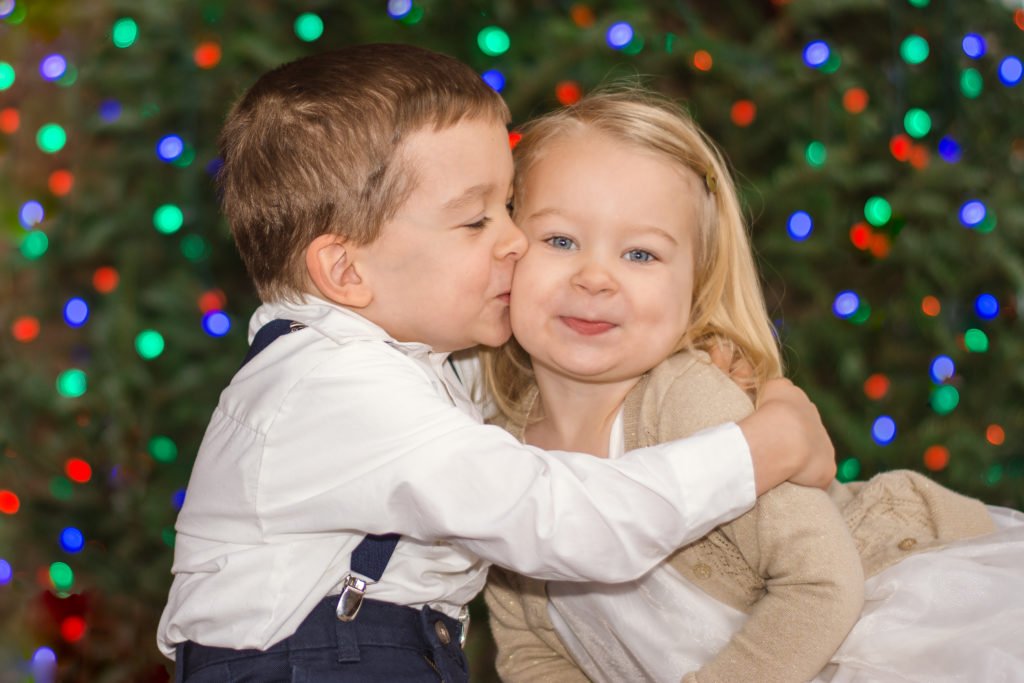Black and white wedding photography may be devoid of color, but sometimes, taking away the color adds something greater to the image.
But isn’t black and white photography going backwards and removing the benefits of today’s color digital sensors? Many new photographers are under this illusion and ignore what can be a very valuable tool.
If you’re stuck between color and black and white, here’s why you should consider black and white photography for weddings.
Black and White Wedding Photography Can Be More Emotional
Wedding photography captures the emotions of the day — and sometimes, images feel more emotional in black and white than color. While that’s not 100 percent true with every shot, removing the color can allow the viewer to focus more on the interaction within the image.
With the color gone, that smile, that tear on the cheek, that father-daughter embrace can feel more powerful.
The concept of playing up emotions in black and white isn’t a recent idea. After all, consider what Ted Grant once said: “When you photograph people in color, you photograph their clothes. But when you photograph people in black and white, you photograph their souls!”
Sometimes, the focus of the shot is the colorful flowers the bride chose, or the lovely orange of the golden hour. But if the image is all about emotion, consider converting the shot to black and white.
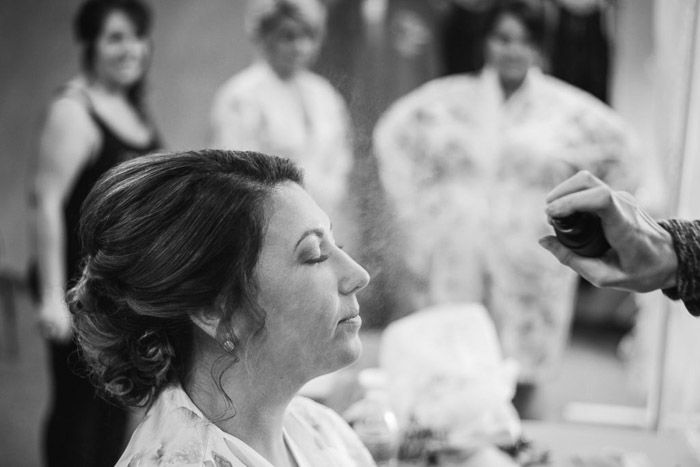
B&W Photos Can Eliminate Distractions
While wedding photographers can choose their compositions and set up poses during the formal portraits, much of what’s actually in the images is out of the photographer’s control.
Maybe the bride’s getting ready location is a church basement with no windows and preschool drawings on the walls. Maybe the church has red carpets that give everything a pink tint. Or maybe the mother of the bride chose to wear neon orange.

While wedding photographers should do everything in their power to eliminate the distractions to create strong images in camera, sometimes, that’s just not possible. Black and white photography can help lend some elegance to getting dressed in a Sunday School room or an oddly lit ceremony venue.
Photographers should never use black and white as an excuse not to find the best angle of the day. But black and white can help eliminate distractions that were impossible not to capture as the wedding day unfolded.
It Plays Up Contrast
Monochrome photography focuses on the difference between light and the dark, rather than the colors in the image. Because of that factor, a black and white edit often works well on images with a lot of contrast. Shots with harsh lighting that was unavoidable while shooting often look better in black and white.
Because you can control how each color converts to a different shade of grey, photographers also have a lot of control over the contrast when converting an image to black and white.
While black and white photography may have analog roots, with a digital file, you can use the HSL (or hue, saturation, luminance) panel in Lightroom or another photo editor to control each shade. You can add contrast or do the opposite to create a matte look.
It Can Help With Difficult Lighting
Because black and white works well in high contrast shots, it is often helpful for working in difficult lighting.
Sometimes you won’t be able to modify the light because the wedding ceremony is outside. Or flash isn’t allowed during the ceremony. Or you are working with large windows and a bright sun. This is where black and white photography can help turn that “bad” light into an asset rather than a disadvantage.
Strong light can look more dramatic and intentional in black and white. Black and white draws more attention to shadows, which can help photographers use the “bad” light to their advantage by adding interest in those shadows.
If the light is bouncing off a colored surface and giving the photo a color cast, a black and white conversion is a simple solution.
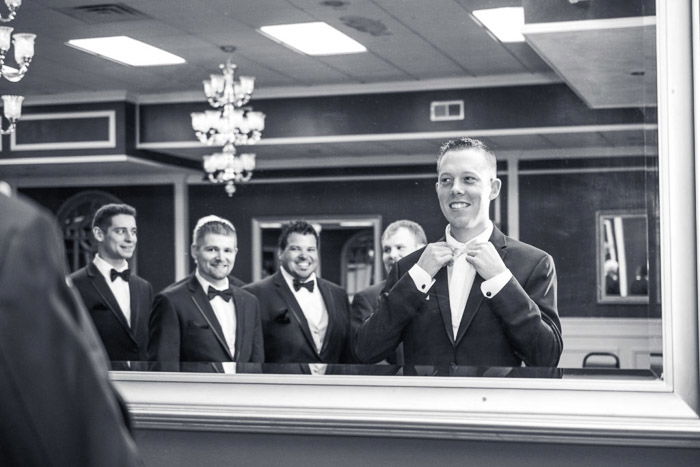
Black and white can also be helpful in boring lighting too. When the light is too soft to add much contrast, a black and white edit can play with contrast by controlling how each color converts in order to have both light and dark within the same image.
To be clear, however, a black and white conversion isn’t a replacement for understanding light. If the bride and groom’s eyes are in shadows in color, the bride and groom will still have shadowy eyes in black and white.
Techniques like using a fill flash, moving the pose to a different spot and metering for skin tones are still necessary.
Black and White Wedding Photography Trick
As soon as you remove the color, the photograph looks different than the world that we live in because of that lack of color. Walking through a world of color, it’s not easy to determine what potential images would look great in black and white.
But, the more you work with black and white photography, the more you learn to spot great images you never would have previously shot thinking only in color.
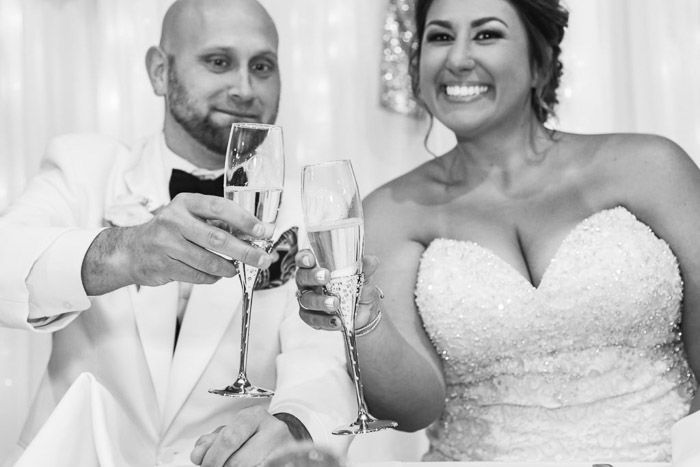
One trick some photographers use as they are learning black and white is to shoot a RAW photo but with the camera settings on a black and white profile. Since the photo is RAW, this allows them to still capture the color data, but to see the shot in black and white right away on the LCD screen, or with an electronic viewfinder, as they shoot.
That trick probably isn’t advisable while shooting a wedding since you may miss color errors that are easier to fix before you shoot. But switching to these settings while on another shoot can help you learn how to visualise a scene in black and white.
Editing Can Be Simpler
Many of the things that are complete editing nightmares are eliminated or at least reduced with a black and white conversion. Red faces from an un-air-conditioned sanctuary in August are simpler to correct without creating odd skin tones using the red luminance slider. The same goes for that red carpet reflecting the light and turning everything pink.
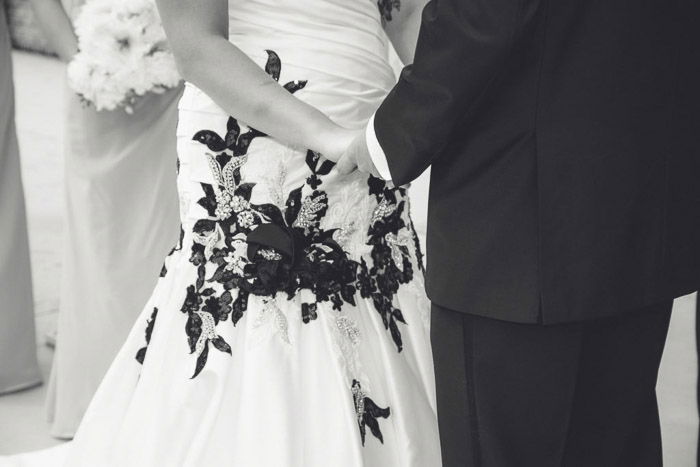
Other edits are less distracting and simpler to master in a black and white shot. The bump of acne, for example, can still be spotted in black and white but is less noticeable and easier to correct.
And distractions in the background may be less likely to need a clone tool with monochrome photography. Check our editing tips for Photoshop and Lightroom.
Don’t Limit Yourself to Black and White
Black and white photography may have analog roots, but unless you’re shooting film, there’s no reason you have to just shoot black and white wedding photography.
Converting a color image to black and white is simple. Undoing that conversion if the original looked better is also simple if you’re working with a non-destructive RAW editor.
That means you can have both color and black and white photos from the same wedding.
Photo looks stunning in black and white? Awesome. Don’t want to lose the bright pop of color in the bouquet? Leave it in color.
Some images look better in black and white, and some images look better in color. As the artist, you can decide.
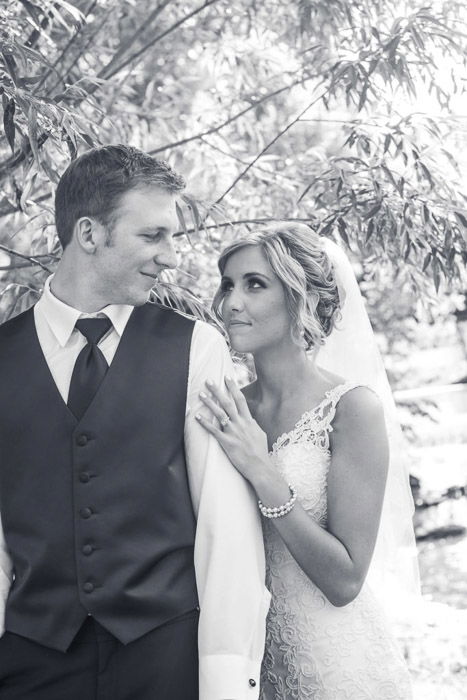
Even when including both types, be sure that both the black and white color photographs have some sense of consistency. For example, if your style is all about bold colors, don’t use a matte black and white conversion. Continue to favour a more bold contrast in the black and white images.
Where this gets tricky, however, is the wedding album. Color and black and white on the same page looks off. Instead, keep the images on the same spread consistent. While there may be both color and black and white in the same album, they aren’t both on the same pages.
If you include a black and white photo on the page, make sure that page (and the other page that’s visible at the same time in the spread) is entirely black and white photography.
Black and White Wedding Photography Is Timeless
Photography isn’t immune to trends. While the photographer’s job is to capture that hairdo that will be the equivalent of a mullet in thirty years, photographers should also aim to create timeless images as much as possible.
Some editing styles that favour an Instagram look may date the photos as much as the style of the dress and tux.
Photography started in black and white, and monochrome continues to be a classic look for weddings. In black and white, that couple’s grand-kids won’t be looking at the colors of the dresses, but the expression on their grandparents faces on the day they got married.
You’re Convinced – Now What?
If you’re ready to add black and white into your arsenal of wedding photography tools, start by experimenting with some existing images from a previous wedding.
Use Lightroom’s HSL panel or Photoshop’s black and white adjustments and play with the different sliders that control how each color converts.
Avoid one-click edits. Find a black and white conversion that suits both the image and your photography style.
After playing with black and white conversion, remind yourself throughout the wedding day to look for shots that play with light and contrast, not color. If you’re unsure, deliver the shot in both color and black and white. The bride and groom can choose their favourite version.
Black and white photography doesn’t capture the color of the bridesmaid’s dresses or those handmade centrepieces the bride and groom spent days working on. But when color is removed, emotions are intensified and distractions are downplayed.
Thankfully, digital photography gives the artist the power to choose when color means the most — and when black and white creates the strongest image.
Why not check out our articles on black and white travel photography, spot color, or our tips for getting better texture in your b&w images too!

